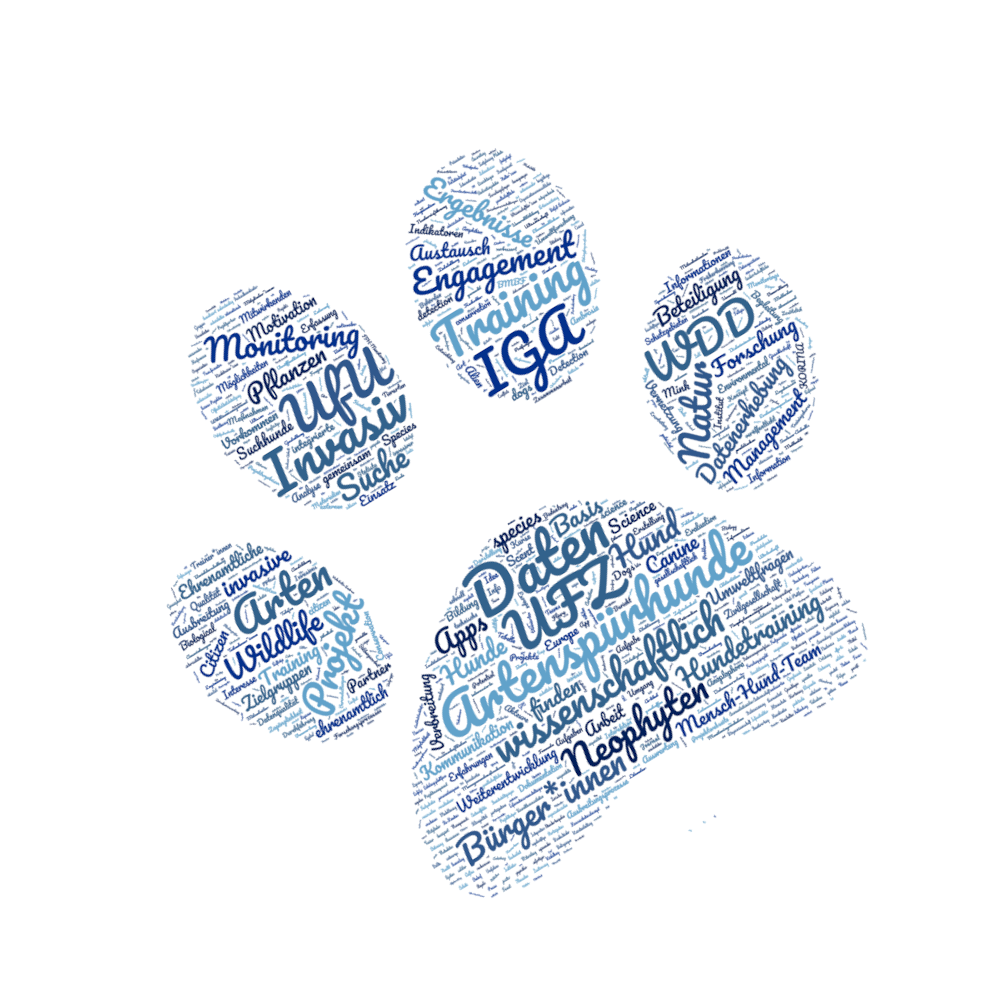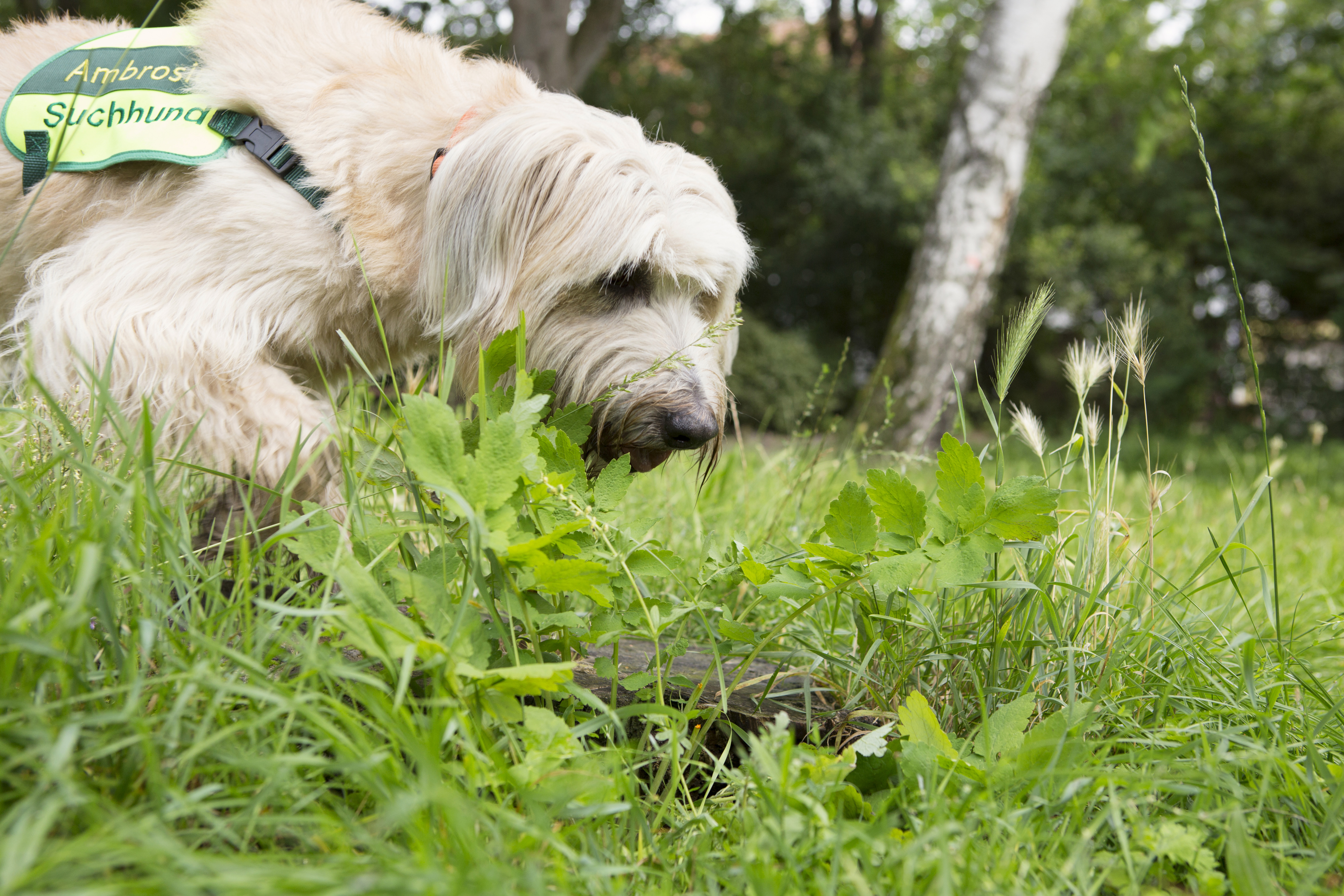IGAMon-Dog
Dog owners support the search and clear determination of occurrences for invasive plant and animal species

Project coordination: Nora Haack
Project leader at UFZ: Dr. Annegret Grimm-Seyfarth
Professional project support: Dr. Reinhard Klenke, Alexander Harpke, Dr. Anne Berger
Staff responsible: Katrin Schneider, Wiebke Harms
Funded by: Bundesministerium für Bildung und Forschung
Project duration: 01.04.2021 - 30.09.2024
Cooperation partners: Unabhängiges Institut für Umweltfragen (UfU) Wildlife Detection Dogs e.V.
Project description
Invasive alien species, (German abbreviation "IGA"), which can threaten other species or their habitats, have become increasingly important in the international conservation debate in recent years. This is because IGAs are a major cause of biodiversity loss. However, the spread of such species can lead not only to problems for the protection and conservation of native flora and fauna, but also to problems for the economy and the health of the population in the new areas of occurrence.
For successful monitoring of IGA, citizen science is considered a necessary working tool worldwide. In addition to the direct contribution to the recording and control of such species, citizen participation significantly increases awareness of the problem and thus also makes an important contribution to public knowledge and improving the prevention of further invasions. A rarely used detection method for the determination of species in Germany is the use of trained detection dogs. Dogs, with their excellent nose and learning ability, are ideal partners for the search and differentiation of plants and animals, if they are trained in a suitable way and according to clear rules.
The basic idea of the project is to involve dog owners with their dogs in the search for invasive species on a larger scale as citizen scientists, in order to improve not only the personnel base, but above all the intensity of the search, the probability of finding and the quality of discrimination. At the same time, the transfer of knowledge from the practical application of citizens should lead to an improvement in the training of volunteers and their dogs and, even more so, give former working dog breeds the opportunity to get a job, which are otherwise rather underutilized as family dogs. These trainings could thus lead to improved education/training and communication between human and four-legged helpers.

Photo: Andreas Müller
The long-term scientific goal is to improve the monitoring of selected IGAs in terms of intensity, discrimination and area coverage by involving dogs and owners specially trained in their detection. The aim is not only to improve the information base, but also to create a basis for the analysis of the spreading processes and the planning of targeted and efficient countermeasures in the form of adaptive management.
Further information
The project is funded by the Federal Ministry of Education and Research as a joint project of UfU e.V. and Helmholtz Centre for Environmental Research-UFZ within the framework of the second funding guideline Citizen Science.
The UfU leads the consortium as coordinator and takes over corresponding tasks in project management. Within the consortium, UfU is primarily responsible for the public monitoring of the research process, the implementation of participatory formats for the involvement of citizen scientists in the project, the implementation of the web platform and environmental education.
The UFZ is responsible for the scientific support of the research project and its monitoring, as well as the standardized logging, mapping, geostatistical analysis and trend calculation of the data collected by citizen scientists.
The association Wildlife Detection Dogs e. V. takes over the preparation of the training contents and coordinates the instruction of the dog owners by experienced trainers as well as the organization and execution of the training courses including an evaluation of the individual human-dog teams.
